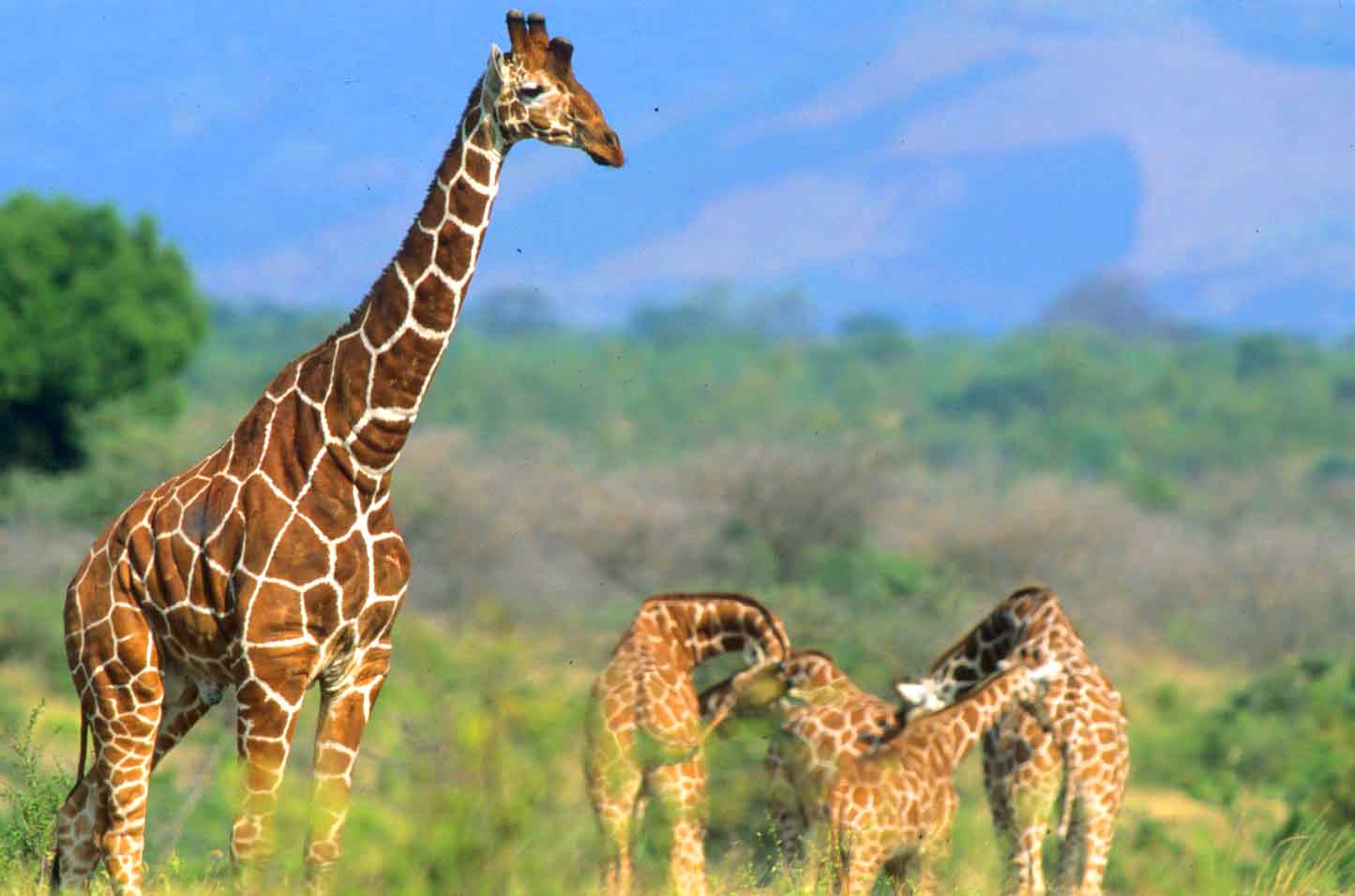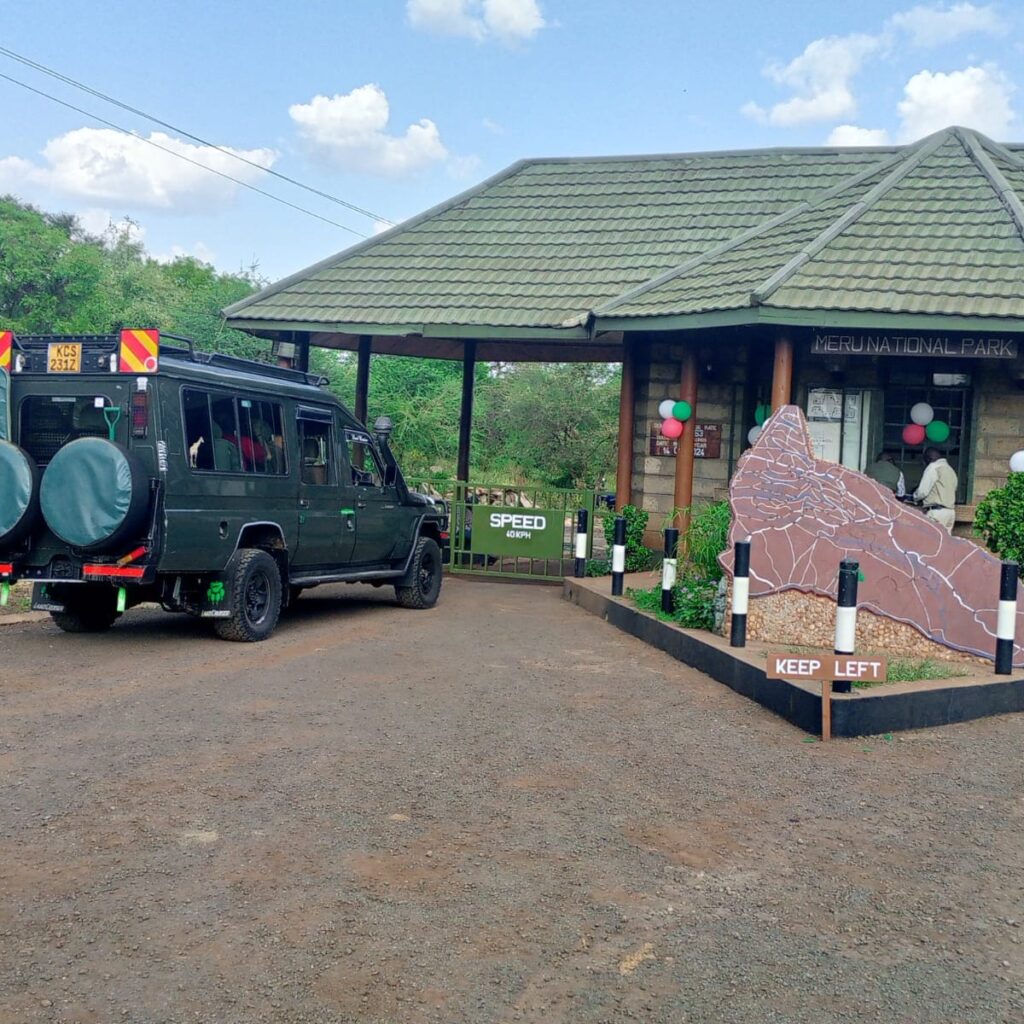

Meru National Park Kenya
Meru National Park, an untamed paradise nestled in central Kenya, lies approximately 350 kilometers northeast of Nairobi in the majestic shadow of Mount Kenya. This remarkable sanctuary encompasses 870 square kilometers of diverse landscapes, offering visitors an authentic African wilderness experience that remains refreshingly uncrowded compared to Kenya’s more frequented parks.
The landscape of Meru National Park presents a stunning mosaic of ecosystems, from dense jungle and sweeping grasslands to life-giving swamps and meandering rivers. The Kenyan Wildlife Service aptly describes it as a “Complete Wilderness,” where nature’s raw beauty remains largely untouched. The park’s dramatic topography ranges from the southeastern lowlands along the Tana River to the commanding heights of the Nyambeni Range, reaching an impressive 1,036 meters above sea level.
Water plays a crucial role in shaping Meru National Park’s ecosystem. The mighty Tana River, along with the Rojewero and Ura rivers, creates a network of lifelines throughout the park. These waterways, bordered by lush riverine forests and distinctive dom and raphia palms, support an incredible diversity of wildlife. The park’s generous rainfall nurtures tall grasslands and creates vital swamps, transforming the landscape into a veritable Garden of Eden for African wildlife.
The northern reaches of Meru National Park feature dense rainforest, while the majority of the park showcases varying densities of bushland and grassland, dotted with Africa’s iconic acacia trees. This habitat diversity supports an impressive array of wildlife, including substantial populations of elephants, giraffes, and both black and white rhinos. The rivers teem with hippos, while predators such as lions, leopards, cheetahs, and hyenas patrol their territories. For bird enthusiasts, Meru National Park offers the chance to spot over 427 species, while snake aficionados might glimpse pythons, puff adders, and cobras.
Meru National Park gained international fame through the work of conservationists George and Joy Adamson, who raised Elsa the lioness here, a story immortalized in the book and film “Born Free.” The park’s natural wonders include the spectacular Adamson’s Falls, where water cascades dramatically over ancient rocks, creating a mesmerizing spectacle.
Best Time to Visit Meru National Park
Meru National Park Kenya offers incredible safari experiences throughout the year, thanks to its moderate climate and diverse ecosystems. Understanding the park’s seasonal patterns helps visitors plan their perfect safari adventure based on their interests, budget, and desired wildlife viewing opportunities.
The Prime Season thats July to October
The long dry season from July to October stands out as the optimal time to visit Meru National Park. During these months, the vegetation thins out and seasonal water sources dry up, concentrating wildlife around permanent rivers and waterholes. This natural phenomenon creates exceptional game viewing opportunities as diverse species gather at remaining water sources. The dry conditions also ensure excellent road conditions, allowing safari vehicles to access more remote areas of the park easily.
Short Dry Season that January to February
Another excellent period to visit Meru National Park occurs during the short dry season in January and February. While not as dramatic as the long dry season, these months still offer great wildlife viewing opportunities with comfortable temperatures ranging from 21 to 27 degrees Celsius during the day and 12 to 14 degrees at night.
The Green Season between November to December
The short rainy season brings brief afternoon and evening showers to Meru National Park. Despite the rain, this period offers unique advantages. The landscape transforms into vibrant shades of green, creating spectacular photographic opportunities. The moisture typically evaporates quickly, keeping roads passable, while the fresh vegetation attracts diverse wildlife species.
Heavy Rains period during April to June
The long rainy season peaks in April and May, extending into early June. During this period, some lodges may close as heavy rains can make parts of the park challenging to navigate. However, this season brings special rewards for patient visitors. Many mammals choose this time for breeding, offering chances to witness newborn animals taking their first steps. The lush vegetation and presence of migratory birds from Europe and North Africa make this season particularly appealing to bird enthusiasts, with over 400 species present in the park.
Planning Considerations
For visitors wishing to combine Meru National Park with other Kenyan destinations, the July to October period aligns perfectly with the Masai Mara Safari migration season. This timing also coincides with American and European summer holidays, making it ideal for international travelers planning extended Kenyan safaris.
Regardless of when you choose to visit, Meru National Park’s diverse landscape and abundant wildlife ensure a memorable safari experience in one of Kenya’s most authentic wilderness areas. The park’s relatively low tourist numbers mean visitors can enjoy an intimate safari experience in any season, making it an excellent choice for both first time safari goers and experienced wildlife enthusiasts.
Activities in Meru National Park
Meru National Park offers visitors an authentic African wilderness experience far from the tourist crowds that characterize many other Kenyan parks. The park’s diverse landscape, ranging from dense rainforests to open savannas, creates opportunities for varied and exciting safari activities that showcase the region’s rich wildlife and stunning natural features.
Some of the activities to do in Meru National Park include
Morning and evening game drives through Meru National Park reveal the park’s abundant wildlife against dramatic backgrounds. Visitors can spot the Big Five – lions stalking through tall grasses, elephants moving in family herds, leopards resting in acacia trees, buffalo gathering at waterholes, and both black and white rhinos in protected sanctuaries. The park’s successful rhino sanctuary stands as a testament to its conservation efforts, offering guaranteed sightings of these magnificent creatures.
Accompanied by armed rangers, walking safaris provide an intimate way to explore Meru National Park’s wilderness. These guided walks allow visitors to discover smaller wildlife, learn about plant species, and understand animal tracking techniques. The experience of exploring on foot brings visitors closer to nature and offers unique photography opportunities.
The park’s network of rivers, including the Tana, Rojewero, and river Ura, creates perfect conditions for river safaris. These water-based adventures offer excellent opportunities to observe hippos, crocodiles, and some of the park’s 427 bird species. Bird enthusiasts can spot various species, from kingfishers and herons along the riverbanks to ostriches in the grasslands.
A visit to Elsa’s grave on the remote north bank of the Ura River provides a poignant connection to conservation history. This site commemorates the famous lioness raised by George and Joy Adamson, whose story inspired the book and film “Born Free.” The location offers a quiet moment of reflection on wildlife conservation’s importance.
The park offers opportunities to engage with local communities, learning about traditional customs and modern conservation challenges. These cultural interactions provide valuable insights into how local communities coexist with wildlife and contribute to conservation efforts.
Meru National Park’s varied landscapes and abundant wildlife make it ideal for photography enthusiasts. The park’s uncrowded nature allows photographers to capture undisturbed wildlife moments, from dramatic predator encounters to peaceful scenes of grazing herbivores.
Special permits allow for night game drives, revealing the park’s nocturnal residents. These drives offer chances to spot elusive creatures like leopards, bush babies, and various owl species, providing a completely different perspective on the park’s wildlife.
With these diverse activities available, visitors to Meru National Park can create their perfect safari itinerary, whether focusing on wildlife photography, bird watching, or simply soaking in the authentic African wilderness experience. The park’s relatively low tourist numbers ensure each activity feels private and personal, making every moment in Meru National Park truly special.
Embark on an Unforgettable Meru National Park Safari
Journey into the untamed heart of Kenya with a Meru National Park safari, where wilderness authenticity meets extraordinary wildlife encounters. Unlike the more crowded safari destinations, Meru offers an intimate experience where you might be the only vehicle watching a pride of lions lounging beneath ancient acacias or elephants teaching their young to cross the crystal-clear waters of the Tana River. This majestic park, immortalized by the story of Elsa the lioness in “Born Free,” presents a stunning tapestry of landscapes, from mist-shrouded rainforests and swaying golden grasslands to palm-fringed rivers teeming with hippos and crocodiles.
Your Meru National Park safari adventure promises close encounters with both black and white rhinos in one of Kenya’s most successful rhino sanctuaries, alongside opportunities to spot the entire Big Five in their natural habitat. As your vehicle winds through the park’s network of secret paths, you’ll discover termite mounds rising like ancient castles from the earth, while over 427 bird species paint the sky with their vibrant colors. Expert guides share tales of the land as you track cheetahs across the savannah or watch elephants play in the cooling waters of Adamson’s Falls. Whether you’re photographing a leopard draped languidly across an acacia branch or listening to the haunting call of fish eagles at sunset, a Meru National Park safari offers the rare gift of experiencing Africa as it was meant to be, wild, untamed, and magnificently free.